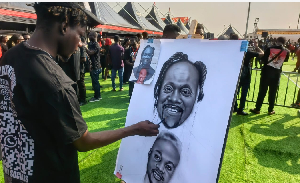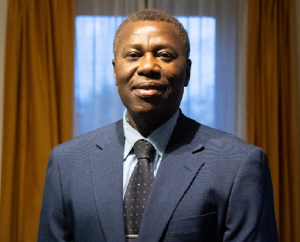Correspondence from Volta Region:
More than 160 pupils in Kofi Kura, a farming community in the Nkwanta South Municipality of the Oti region do not know what is quality education for the past thirteen decades since education was brought to the community.
From Nkwanta township the municipal capital, it takes more than one hour to reach the community on a very deplorable road, although portions of the road was cleared with a bulldozer, it is very dusty making it difficult for more than a vehicle to ply the route.
The community has no electricity, potable water, accessible roads, social centre, library, internet and portable housing making living and schooling in the environment very boring.
According to the headteacher of the primary school, Juwah Peter, education was brought to the community in the year 2007 by a resident volunteer but has since been battling with teaching and learning equipment.
He told a team of journalists who visited the school on Tuesday, 9 February 2021 that, although the Nkwanta Municipal Assembly absorbed the school a few years after its establishment, they are still lacking amenities.
The pupils were seen lying down on a bare floor due to lack of furniture to participate in the day’s teaching, with many also barefooted and looking very underprivileged without even an official school uniform on them.
An old mud house constructed by the community for the school has been abandoned due to its devastating state, however, a three-unit classroom block which was provided in December 2020 by the Assembly through the efforts of the Regional Minister-designate for Oti, Dr. Joshua Gmayenaam Makubu, is not enough to accommodate each level, thus; from primary one to six.
A tour through the community saw a number of children who were not in school, loitering around barefooted.
Mr. Jawul said, “ the challenges are numerous but the major ones I can tell you are; one, the nature of the road, if any teacher is posted to this community, accessibility, how the person will even get his luggage to the community here is a problem because the road is not good so nobody is ready to come, then two, you can see there are light polls and other things but no light, then no network so in fact, we’re really suffering. So if they can even help us with the network and light, I think the road we can be managing it like that, but without light and network, we will suffer because we’re at a particular age that without light you cannot do anything”
A female teacher who was posted to the school in January 2021, Patience Banaman also married her ordeal, “hmmm I cried on her way to the community for the first time” then “ I told God, God if I’ve ever been ungrateful, I’m sorry, and I told myself that these kids are to the world so until when you get a better place for them, we are not leaving (the school)”.
The school with a total population of 165 pupils, most of whom are between the ages of four to fifteen has three trained teachers only with assistance from a community volunteer. The school has no Junior High School (JHS) attached to it, however, children who completed primary six would have to trek miles to attend JHS in a nearby community.
According to the headmaster, the situation has led many of the children to drop out of school over the years and the academic performance of those who are still in school is not encouraging.
Many of the residents have gone to farm as at the time of the visit to the community, but few who interacted with the journalists appealed for development, they said, they need urgent aid from the government, individuals from home and abroad in areas such as potable water, housing for teachers, health centre, electricity, educational infrastructure and access to road.

Regional News of Tuesday, 9 February 2021
Source: www.ghanaweb.com













